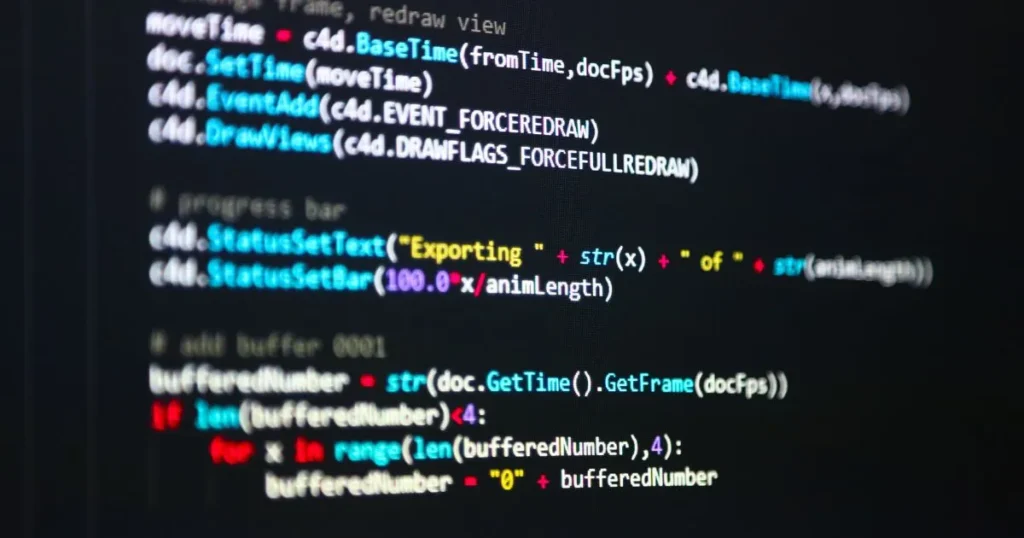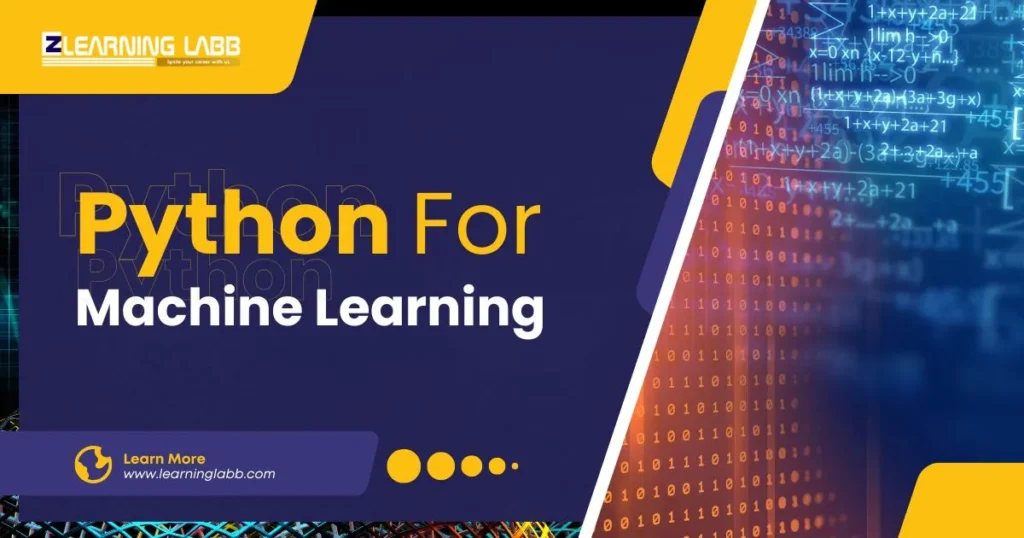Learn Python for Machine Learning: Ever wondered how Netflix recommends shows or how Google Maps predicts traffic? That’s machine learning in action! And guess what? Most of it runs on Python. If you’re planning to jump into the world of machine learning, you can’t ignore machine learning using Python.
This blog by ZELL will explain you through the journey of machine learning using Python, especially for beginners and aspiring data scientists in India. We’ll also touch on the role of Python, key reasons why it’s the go-to language, and how you can get started today – yes, today with practical courses from Zenoffi E Learning Labb.
What is Machine Learning with Python?
To break it down, machine learning (ML) is about teaching computers to learn from data without being manually programmed for every single task. In simple words, the system learns and improves on its own.
Now, when we bring Python into the mix, it becomes “machine learning using Python” which means using Python programming tools and libraries to create ML models.
“Machine learning is the last invention that humanity will ever need to make.” – Nick Bostrom
And no surprise, Python dominates this space. Libraries like Scikit-learn, TensorFlow, Pandas, and NumPy make Python a solid choice. So, when someone asks, why Python is used for machine learning? the answer is pretty straightforward: Python is easy to learn, has a strong community, and supports tons of libraries that make ML development faster and easier.

Why Python is Used for Machine Learning?
Good question! Let’s break it down.
1. Simple and Readable
Python’s syntax is almost like reading English. This makes it beginner-friendly and a great starting point for those who want to learn Python for machine learning.
2. Massive Libraries and Frameworks
Need image processing? Use OpenCV. Want to work on neural networks? Try TensorFlow or PyTorch. Python’s ecosystem is full of such gems.
3. Strong Community Support
When you’re stuck, chances are someone already had the same issue and solved it. Stack Overflow and GitHub are full of solutions and project ideas.
4. Cross-Platform and Integration-Friendly
Python works well with other languages and platforms. Plus, it integrates easily with web applications and large datasets.
How Much Python is Required for Machine Learning?
Now, let’s get practical. You don’t need to be a Python guru to get started with machine learning. But you do need a good grasp of the basics.
Here’s what you should know:
- Variables and Data Types
- Loops and Conditional Statements
- Functions and Classes
- Working with Libraries like Pandas and NumPy
- Basic Understanding of File I/O and APIs
Once you’ve got that down, you’re all set to explore machine learning using Python.
If you’re unsure about your current skill level, enrolling in beginner courses like those offered by Zenoffi E Learning Labb’s Data Science or Data Analytics programmes can be a game-changer.

Step-by-Step Guide to Start Machine Learning Using Python
Alright, so how do you actually get started? Here’s a simple roadmap:
Step 1: Learn Python Basics
Use free tutorials or take structured learning from platforms like Ze Learning Labb.
Step 2: Learn Math and Statistics
You need to understand concepts like:
- Linear algebra
- Probability
- Statistics
- Calculus (basic level)
Step 3: Learn Python Libraries for ML
- Pandas – for data manipulation
- NumPy – for numerical data
- Matplotlib – for data visualisation
- Scikit-learn – for building ML models
Step 4: Work on Mini Projects
Nothing beats learning like doing. Start with projects like spam email classification or loan approval prediction.
Step 5: Join a Machine Learning Python Course in Bangalore or Online
If you’re in India, especially Bangalore, you’re in luck. There are several reputed programs available. Ze Learning Labb offers a hybrid learning model, which is ideal for working professionals and students alike.
Learn Python for Machine Learning with Ze Learning Labb
Wondering where to start your ML journey? Look no further than Ze Learning Labb. Here’s what they offer:
Data Science Course: Covers Python, Machine Learning, Statistics, and real-world projects. A great fit for anyone serious about ML.
Data Analytics Course: Perfect for those who want to bridge business and data. Learn Excel, SQL, Python, and dashboards.
Digital Marketing Course: Believe it or not, even digital marketing uses machine learning, for customer segmentation, predictive analytics, and more.
Each course is industry-relevant, taught by experienced professionals, and designed to give you hands-on knowledge.

What You Can Build with Machine Learning Using Python
Still wondering if this is for you? Here are some real-world applications:
- Spam Filters
- Chatbots and Virtual Assistants
- Recommendation Systems (Netflix, Amazon)
- Image and Voice Recognition Systems
- Stock Market Predictions
Python is used in almost every one of these!
On A Final Note…
There you have it! Machine learning using Python isn’t some far-off skill only for geniuses or data scientists at big tech companies. It’s a very achievable goal, especially when you follow a clear learning path and use the right resources.
From understanding why Python is used for machine learning to exploring real-world applications, the journey is both exciting and rewarding. And if you’re in India, you have great access to structured learning like Ze Learning Labb’s machine learning Python course in Bangalore.
“Start where you are. Use what you have. Do what you can.” – Arthur Ashe
So, are you ready to learn Python for machine learning and step into the future?
If yes, then maybe your next stop should be Zenoffi E Learning Labb.





